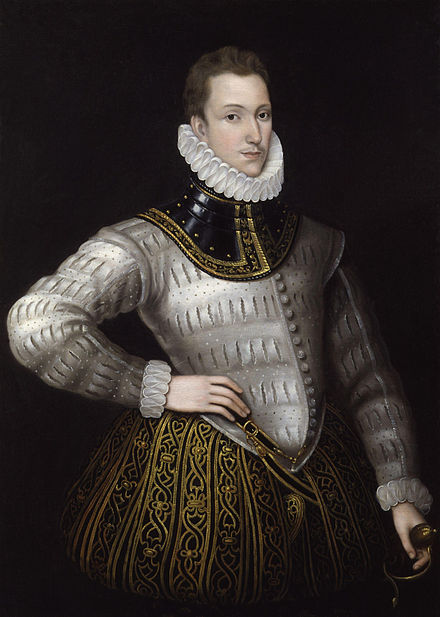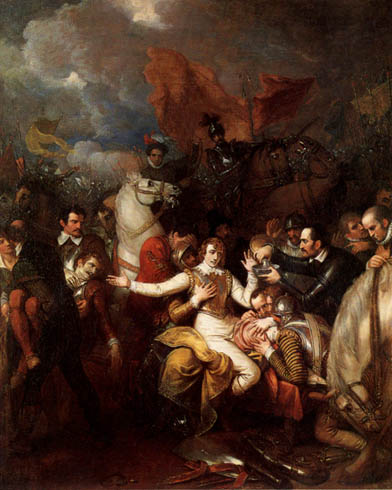Sir Philip Sidney

Sidney was born in England on November 30, 1554, just before the start of the Elizabethan Era. His father served as both the Lord Deputy of Ireland and the president of the Marches of Wales (both positions appointed by the Queen); his mother was a Lady-in-waiting to Queen Elizabeth. He became a member of Parliament at age 18 in 1572 and was knighted in 1583. Despite serving in Parliament, Sidney spent much of his time outside of England, visiting his godfather, King Phillip II of Spain, or traveling across the rest of Europe. He married Frances Walsingham, daughter of Queen Elizabeth’s principal secretary and spymaster, in 1583 and they had a daughter in 1585. Sidney died on October 17, 1586 at the age of 31 after being wounded in a military campaign at the Battle of Zutphen in the Netherlands. Sidney’s funeral procession was so large (one of the most elaborate of its time) that it nearly bankrupted his father-in-law.

Writings
Sidney is considered to be the second greatest poet of the Elizabethan era, after William Shakespeare. He is known for writing Astrophil and Stella, a series of 108 sonnets, inspired by Lady Penelope Rich, whom he was once nearly engaged to.
Sidney did all of his writing in the years between 1578, when he started writing poetry, and his death in 1586. None of his works were published until 1590, and it unknown the exact dates his works were written or the order they were written in.
His other writings include The Lady of May, written and performed for Queen Elizabeth in the 1578 or 1579 and An Apology for Poetry (or The Defense of Poesy), a work of literary criticism possibly written in 1580.
Arcadia
Sidney dedicated Arcadia to his sister, Mary Herbert. The poem’s full title is The Countess of Pembroke’s Arcadia, named for his sister, who held the title. He is thought to have first written Arcadia in the late 1570s and finished in in 1580, while staying at his family estate (“The Old Arcadia“). In the 1580s, however, Sidney began revising Arcadia, although he died before he could finish. Friends of his published a revised version of Arcadia in 1590, but his sister published a different revised edition in 1593 (“The New Arcadia“); following Sidney’s death, Mary Herbert became the executor of his literary estate.
Arcadia is prose poem in five books, with poems separating each book. It is a pastoral romance, idealizing an escape from city life and into the country. It is set in Ancient Greece and tells the story of the Duke of Arcadia, his wife, and their two daughters. After receiving a foreboding prophecy, the duke takes his family to the country to escape it, only for the prophecy to be fulfilled anyway.
Legacy
Despite it’s complicated writing process, Arcadia has had a long-lasting impact on both literature and society. The character of Pamela is the first recorded use of the name “Pamela,” so it is believed that Sidney created the name. Plots of Arcadia are commonly considered to be taken by Shakespeare for King Lear, and, to a lesser extent, The Winter’s Tale and Hamlet. It is believed that King Charles I, as he was being executed in 1649, recited Pamela’s Prayer from Arcadia.
Due to the incompleteness of New Arcadia, writers continued to rewrite, revise, and adapt it for centuries to come, trying to complete the text as well as putting their own spin on it.